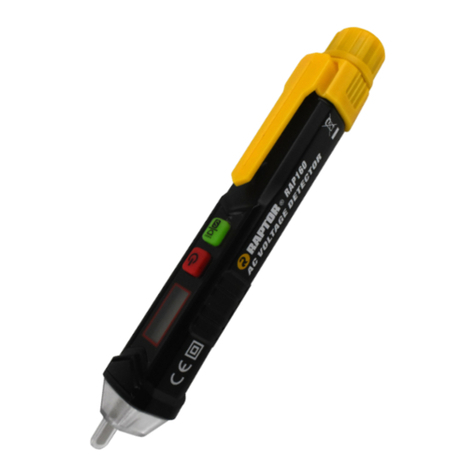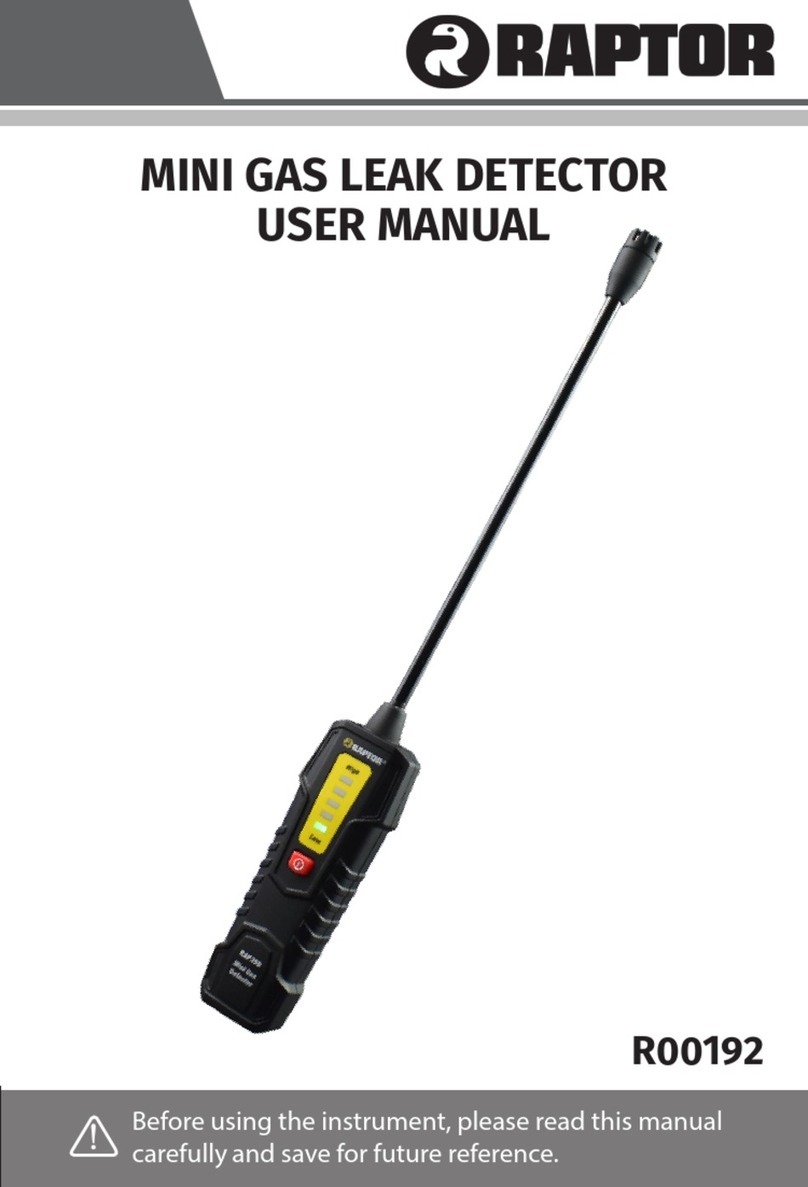
Trouble shooting
You should have a minimum of 3kv on your fence line to be effective. In principle, electric
fencing is a simple concept. If your energiser is working then there can only be two other
places to look - your fence line or ground system.
Sound and sight - Most energisers emit an audible tick caused by the ring of the output
transformer. This is a good indication that the energiser working. The indicator light or
fence monitor should be pulsing or ashing. As the raptor has an in built fence monitor and
this should be operating at all times. If the display is red it is indicating that the energiser
is under heavy load from the fence system. If you switch the energiser off, disconnect the
wires from the terminals and turn it back on, the load will be removed and the monitor should
ash green. This indicates that the problem is somewhere on the fence system. Flash test
- disconnect the croc clips from the fence and ground stake. Clip the croc clips together
making sure the metal jaws contact each other. Slowly draw them apart - you should get a
short (1-2mm)spark jumping from one to the other. Use a Tester - disconnect completely
from the ground stake and fence and take a reading across the terminals. Depending on the
model of energiser you should have a reading between 7 and 10kv.
Low voltage - If there is high voltage on your ground stake it is missing from your fence line.
The greater the depth and surface area under the ground the more efciently your ground
stake will collect the pulse as it returns through the earth. If you get a shock from your ground
stake, or your tester shows voltage when touched to the ground stake, you can improve
your whole system by adding further ground stakes. Link additional ground stakes with wire,
spacing them about a metre apart.
Clear lines - An electric fence operates as an open circuit. The fence is positive and the
ground itself is negative. By touching both fence and ground the animal completes the circuit
and get the shock. If anything touches both ground and fence, other than the animal, it
reduces the effective voltage on the fence line. The fence line must not touch anything that is
not insulated from the ground. Check the fence line is clear from all vegetation and wooden
posts, metal posts and gates are not touching the line. Check all insulators. The fence line
can occasionally come unhooked from insulators and touch the posts and broken insulators
can cause leaking of power into the post and ground. Line problems - If you are joining
two sections of tape or wire, try to use correct connectors to ensure the conductors in both
sections are connected. Check the condition of the line, if the metal conductors within the
line are broken it will effect the efciency of the fence. Greater metal content means greater
efciency. Netting - Netting is closer to the ground than other forms of fence so requires
more maintenance to keep clear from vegetation. All horizontal lines, apart from the bottom,
must be kept clear from the ground. If your net is sagging and touching the ground, add
in extra posts. The net must also be clear of contact from other forms of fencing, arks and
chicken wire runs. Check the metal spikes on the posts, occasionally wires can get caught
up or slip down to the metal spike and take power to ground. Remember- if your energiser
and ground system is ne, the problem will be somewhere on your fence line!
If in doubt, Call - We are always happy to help. +44(0)1626 33 11 88
Checking the energiser
Checking the ground system
Checking the fence line























